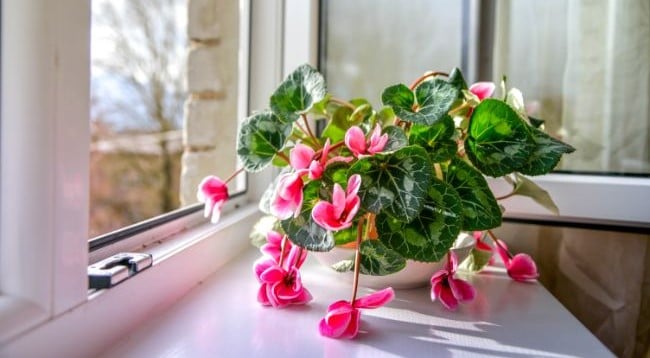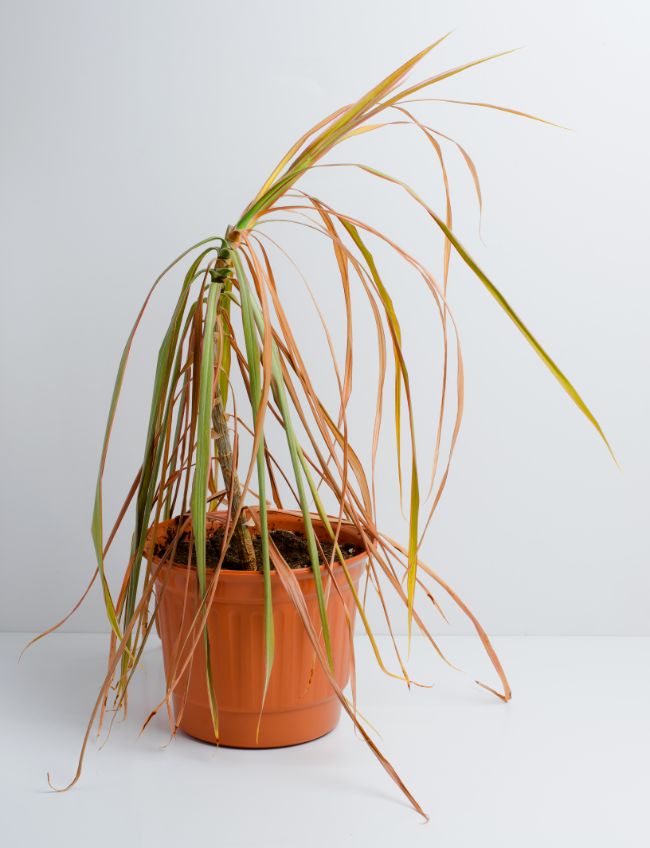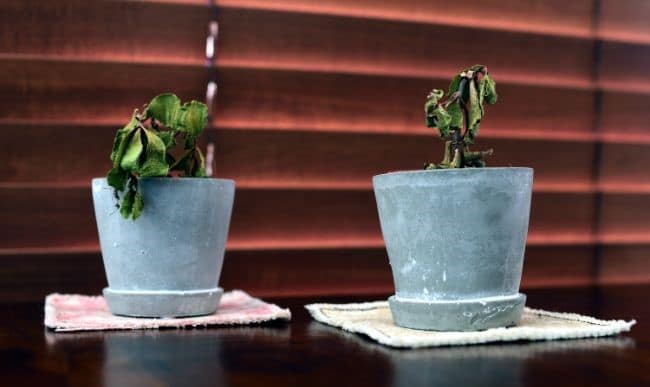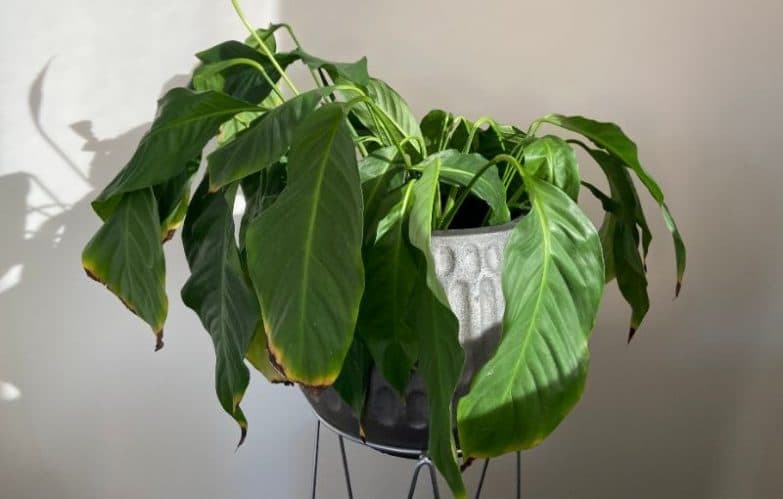If you’ve just repotted your plant, only to see it wilting in front of your eyes, you may be wondering why it has happened. Many factors can contribute to a plant wilting after repotting, but there are a few easy steps to reduce the risk of it happening.
A plant wilting after repotting can be due to root damage during repotting or a sudden change in conditions that the plant struggles to react to. Optimize care before and after repotting, and take great care while repotting to avoid damaging the roots to prevent your plants from wilting.
Read on and I’ll cover all the reasons why your plant may be wilting after repotting, how to fix each issue and how to prevent it from happening in the future.
Is It Normal For Plants To Wilt After Repotting?
Wilting after repotting can be quite common, particularly in the first few days after repotting. However, most times this should only be mild if it is noticeable at all. With care during the repotting process, you should be able to prevent wilting after repotting in most situations.
Repotting can be a stressful time for your plant, as it is suddenly moved from somewhere it has been growing happily into new conditions. Sometimes, even with the greatest of care, you can cause minor damage to the roots during the repotting process, which can impact the plant’s ability to immediately thrive in its new home.
Other times, there are issues regarding care conditions before or after repotting, or the process of repotting that can make wilting after repotting more likely.
Can You Kill A Plant By Repotting?
It is entirely possible, and not that uncommon to kill a plant by repotting. Certain plants are more susceptible to dying during the repotting process. A sickly plant or one that is not given sufficient care after repotting is more likely to die.
Most, but not all plants can be prevented from dying by following some simple advice.

Root Damage
When repotting your plant, you should generally try to disturb the roots as little as possible. This depends hugely on the plant and the situation, but many plant roots are easily damaged by being disturbed too much.
Many plants absorb a significant proportion of water from the tiniest roots that branch from larger roots. These can be incredibly fragile and even loosening old soil can break or damage them, greatly impacting the ability of the plant to absorb water.
You need to be particularly careful not to disturb roots in the following situations;
- Repotting seedlings that are just starting to establish themselves.
- Repotting plants that are particularly sensitive, such as Calatheas, Alocasias, many vegetables, etc.
- Plants that are already unhealthy. If possible, it is usually better to improve the health of a plant before repotting, unless the current potting conditions are a key reason why the plant is unhealthy.
There are of course exceptions to this rule. If your plant is very root bound, then it clearly has a large mass of roots to support the plant. These plants will normally benefit from having the densely packed rootball loosened up when repotting. This will help the roots grow and spread into the new potting media and will lead to a healthier plant in the long term.
Change In Soil
Take care when choosing soil for repotting. Although plants have differing requirements, they all adapt to the conditions they are given. If you make a sudden change in the composition of the soil or pH, this can shock the root system and lead to your plant wilting after repotting.
An example of this is when I recently repotted my Blue Star Fern. These are epiphytic ferns, used to growing attached to other plants, rather than in soil. They are often planted in a well-draining potting mix when you purchase them, as mine was, and the temptation is to repot them into an epiphyte mix.
However, Blue Star Ferms are good at acclimating to whatever soil they are grown in from an early stage. Switching to a pine bark-based epiphyte mix would significantly alter the pH and structure of the soil, and would likely do more harm than good.
The best thing to do in this situation, if you wish to repot at all, would be to use a similar mix, but add amendments such as perlite or coarse sand to increase drainage, ensure the pot is well-draining, and consider a porous pot material such as terracotta to improve soil drying characteristics.
Lack Of Water
If you find your plant wilting after repotting, it may be due to a lack of water. This can be due to a lack of water in the soil, or that the roots are temporarily unable to absorb water to meet the requirement sof the plant.
I normally advise waterng your plants thoroughly a few days before repotting. This assumes you are not repotting to treat root rot or overwatering problems of course! See this article for how to fix an overwatered plant.
Watering a few days before allows the plant to optimize hydration and start the repotting process in good shape. I like to repot when the soil around the plant is fully moist, and then only lightly water the plant once it has been repotted.
As mentioned, sometimes the roots of a newly repotted plant do not function as well as normal for a few days or more, so watering thoroughly after repotting can increase the risk of root rot, as the roots sit in contact with soggy soil, without being able to properly absorb much of it.

Change In Climate
Many times after repotting we also change a plants’ location, and this can be a major contributor to wilting after repotting. This commonly happens to seedlings that are started indoors and are then repotted, before taking them outside.
The stress of repotting and the change in temperature, humidity, and lighting of being taken outside can often be too much for some plants. I normally recommend repotting first, waiting a week, and then taking steps to move your plants outside.
For houseplants, repotting in a new container may prompt you to reevaluate the condition of the plant and where it would grow best in your home. If you suddenly change the conditions for your houseplant, it can do more harm than good in the short term.
Again, resist the temptation to make sudden changes after repotting, and wait until you are sure the plant has recovered from the repotting process.
One word of note is that after repotting, moderation is key. If your plant was in excessive light or high temperatures before it was repotted, it will normally do better if you move it to somewhere with more moderate lighting and temperatures, to give it a chance to stabilize itself.
Wrong Time Of Year Or Stage Of Growth
For many plants, the best time to repot to prevent wilting is in early to mid-spring, when the plant is starting to grow strongly. This is an ideal time, as the plant is starting to grow quickly, but does not yet have a lot of new foliage to support. In springtime, the roots are more likely to grow rapidly and strongly after repotting, allowing the plant to establish in its new container quickly.
Every plant is a little different, and there are plenty of plants that are best repotted at specific times of the year. Check the care requirements of your individual plant.
Should I Water My Plant After Repotting?
Ensure your plant has been watered thoroughly 1-2 days before repotting. After repotting, water lightly, without completely soaking the soil. This will provide some moisture, without waterlogging the roots.
It is better to water lightly after repotting and then monitor water requirements closely to see when next to water your plant. Read my guide to knowing when to water your houseplants for more info. This really is one of the most essential skills to learn to keep potted plants healthy.
How Long Does It Take A Plant To Recover From Transplant Shock?
This can vary widely. For many smaller plants, they can fully recover within a few weeks. For larger plants or trees, it can take months or even years for all problems caused by transplant shock to resolve.
A simple case of wilting after repotting can be resolved with good care and often the plant has no residual signs of damage. A more severe case can result in dead or damaged foliage. This does not fully recover, but will be replaced in time with new, healthy foliage.

How To Prevent A Plant Wilting After Repotting
Here are the steps that I take to ensure my plants do not suffer from wilting after repotting;
- Make sure you pay particular attention to your plants’ care needs in the weeks before you plan to repot. A healthy plant will be much more likely to come through the repotting process with ease.
- Take time to research what the ideal type of pot and soil are for your plant, so you can repot into ideal conditions. Don’t forget to think about pot size as well as material, as this can have a huge bearing on the long term health of the plant.
- Make sure the new potting mix you are using is free from pests or disease. Take particular care if you plan to reuse old potting mix.
- Get everything you need to repot your plant ready. Place a little soil into the new pot so that you can place your plant directly into it when ready.
- Try to slide your plant out of its existing pot. If the plant will not come out right away, gently squeeze the sides of the pot to loosen the soil and roots.
- Avoid pulling the plant out by the stem or foliage, as this can cause damage to the roots or foliage which can increase the risk of your plant wilting after repotting.
- If your plant is in a clay pot, and you’re struggling to get it out, you can use a knife and slide this down the side of the pot to separate the pot from the soil. Take your time.
- Place the pot on its side and slide the plant out gently. Lift it by the root ball and support the foliage. Place it into the new pot. You will only need to loosen the roots if the plant is very rootbound. Otherwise, avoid disrupting the roots where possible.
- Gently add the new potting mix around the sides of the plant until the soil is up to the same levels it was in the previous pot. Adding soil to a higher level than previously can cause problems with stem rot, so take care.
Aftercare To Prevent Your Plant Wilting After Repotting
Don’t make any sudden changes to the care of your plant for several weeks after repotting except in the following circumstances.
- If your plant was previously in lighting that was unsuitable for the plant, adjust this a little, towards more moderate conditions. This will encourage plant growth, without causing undue stress.
- If your plant requires additional humidity than you can normally provide, consider taking steps to improve humidity, such as grouping your plants, using a humidity tray, or try one of these other great ways to increase humidity for your plants.
- Consider monitoring the temperature around your plants to make sure it is ideal. I use a digital thermometer that records the current, maximum, and minimum temperatures. This helps me to move my plants to a location where the temperature range is always in their comfort zone.
- Avoid fertilizing your plants for at least 2-3 weeks to prevent your plant wilting after repotting. Repotting is stressful for plants, and so is a sudden influx of nutrient salts. The combination of stressors can often do more harm than good. Read my guide to fertilizing houseplants for more info.
- Pay extra attention to the water requirements of your plants after repotting to prevent wilting. Never water your plants on a schedule. Instead check the soil and the foliage of your plants on a regular basis to look for clues that they need to be watered.
Last Word
Although it can be disheartening to see your plant wilting after repotting, most plants can be saved with appropriate care. Even better, it can be a learning experience to help you avoid the same mistake in the future and ensure repotting always goes smoothly for you and your plants.

